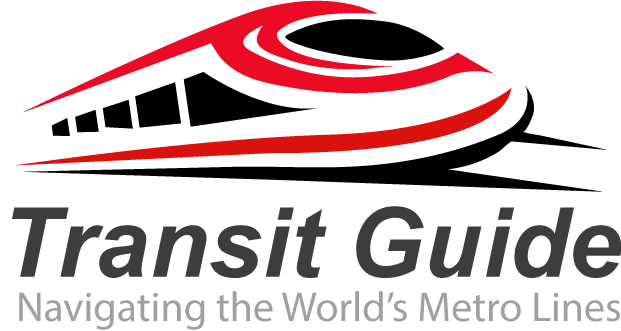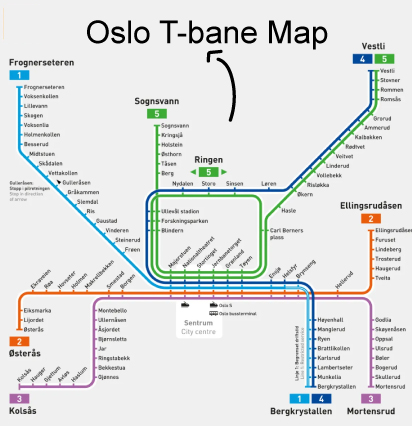The Oslo T-bane (T-banenettet) stands as one of Europe’s most efficient and scenic metro systems, serving Norway’s capital with exceptional reliability and breathtaking views. This comprehensive guide covers everything you need to know about navigating Oslo’s underground and overground rail network.
What is the Oslo T-bane?
The Oslo T-bane is the rapid transit system serving Oslo and surrounding municipalities in Norway. The name “T-bane” comes from “tunnelbane,” meaning “tunnel railway” in Norwegian. Operating since 1966, this metro system combines underground tunnels in the city center with elevated and ground-level tracks extending into Oslo’s suburbs and natural areas.
Network Overview and Lines
The T-bane network consists of five main lines, numbered 1 through 5, all converging in a shared tunnel system beneath central Oslo. The system spans approximately 85 kilometers of track and serves 101 stations, making it one of the world’s longest metro systems by total length.
Line 1 (Blue): Runs from Frognerseteren to Bergkrystallen Line 2 (Orange): Connects Østerås to Ski Line 3 (Green): Links Kolsås to Mortensrud
Line 4 (Yellow): Operates from Vestli to Bergkrystallen Line 5 (Purple): Runs from Sognsvann to Ski
Key Stations and Destinations
The T-bane connects major Oslo attractions and districts efficiently. Central stations include Jernbanetorget (Central Railway Station), Stortinget (Parliament), and Majorstuen, which serves as a crucial interchange hub. Popular tourist destinations accessible via T-bane include:
- Holmenkollen: Famous ski jump and winter sports museum
- Frognerseteren: Scenic viewpoint and hiking trails
- Vigeland Sculpture Park: World’s largest sculpture park by single artist
- Oslo Opera House: Architectural masterpiece in Bjørvika
- Munch Museum: Showcasing works of Edvard Munch
Operating Hours and Frequency
The Oslo T-bane operates from approximately 5:30 AM to 1:00 AM on weekdays, with extended hours until 2:00 AM on Fridays and Saturdays. Trains run frequently during peak hours, typically every 3-6 minutes in the city center, with reduced frequency during off-peak times and weekends.
Ticketing and Pricing
The T-bane uses Oslo’s integrated public transport ticketing system, operated by Ruter. Passengers can purchase tickets through the RuterBillett mobile app, ticket machines at stations, or Ruter customer service centers. The system operates on zone-based pricing, with most central Oslo attractions falling within Zone 1.
Scenic Journeys and Unique Features
Unlike many metro systems worldwide, Oslo’s T-bane offers spectacular scenic routes, particularly on lines extending into forested areas and hills surrounding the city. Line 1 to Frognerseteren provides stunning views of Oslo fjord and surrounding landscapes, making it a popular choice for both commuters and tourists.
Accessibility and Modern Features
The T-bane prioritizes accessibility, with most stations equipped with elevators and facilities for passengers with reduced mobility. Modern trains feature air conditioning, real-time information displays, and bicycle storage areas, enhancing the overall passenger experience.
Planning Your Journey
For optimal navigation, download the RuterReise app, which provides real-time schedules, route planning, and service updates. The T-bane integrates seamlessly with Oslo’s bus and tram networks, offering comprehensive city-wide connectivity for residents and visitors exploring Norway’s vibrant capital.

